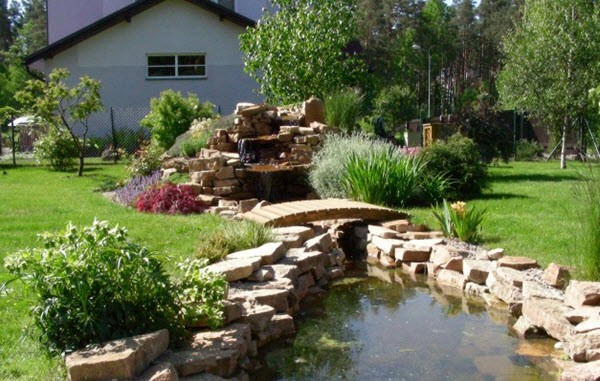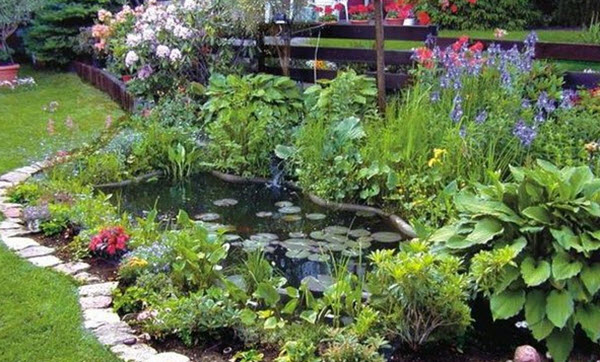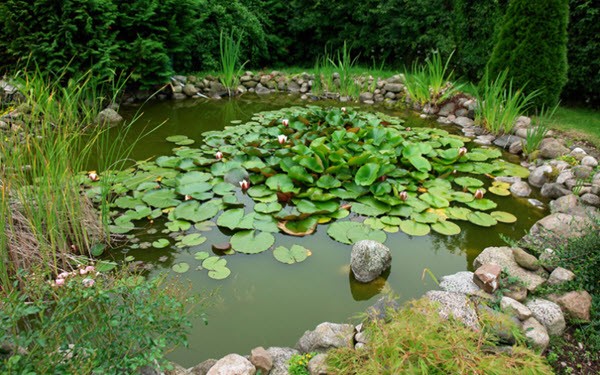If a suburban plot has a hilly landscape or a swampy pond, then with some labor costs, these "disadvantages" easily turn into magnificent recreation areas. On your own or with the help of specialists, you can create a swamp in the garden or a pond, pond, stream, cascade or something else.
If there is no such natural help on the site, then you can create a pond yourself using ready-made plastic forms. If you want to have a more complex pond or stream, you should contact landscape design specialists. With their help, a spectacular corner can appear on the site, combining, for example, a pond, a waterfall and a slide with alpine plants.
Content
Pond of natural origin
If there is a reservoir of natural origin on the site, then it is more than likely that over time it begins to turn into a swamp, the water blooms and stagnates. In order for such a pond to become a decoration of the site, the first thing to do is to do a general cleaning of it, that is, clean it.
There are several ways to clean a swamp. You can simply remove silt and mud from the bottom with a rake. Another way is to place the net at the bottom of the pond. After a year, the net can be pulled out with all the debris and silt that it collects. You can use specialized filters, launch bacteria, snails, oysters, fish. A specialist will help you figure out which cleaning method to choose.
You can make a natural pond yourself if there is clay soil and the groundwater level is close to the surface. A pit is being dug. If the soil of the pit does not retain water, then it should be strengthened with waterproofing material. Fill the pond with water or bring drainage to it.
It should be noted that any reservoir requires care, high-quality equipment, fish and plants.
artificial reservoir
First of all, it is necessary to choose the right place for the future pond. It should be open to the sun in the first half of the day. To shade the pond on the sunny side, plants that love moisture are planted. Trees should not be placed near the pond. Their root system can damage the waterproofing, and the leaves, falling into the water, rot and provoke the flowering of the reservoir, the appearance of an unpleasant odor.
As for the size of the artificial pond, it depends on the taste of the owners of the site and the tasks that the reservoir should perform. If it is intended for swimming, then its dimensions can be quite spacious, and a convenient descent to the water should be provided. If the pond is decorative, then its banks are made stepped. This will allow you to beautifully place aquatic plants. If there is a slope on the site, then it is advisable to camouflage it with a cascade of waterfalls and small ponds. The shape of an artificial pond can be any, but an oval pond looks best.
How to keep water in a pond
In order for water not to leave the reservoir, it is necessary to provide waterproofing at its bottom. It can be done in various ways:
1. Clay insulation. Such a system is easy to do, but it takes time. The principle is that the pit is coated layer by layer with clay, 15 cm thick. Pebbles and stones are placed at the bottom.
2. Ready-made plastic molds are a very easy way. A cast mold is installed in the excavated pit, on a bed of sand. Next, it is strengthened and decorated with plants. The disadvantage of this method of arranging a reservoir is that it is too shallow (0.5 m). This betrays its artificial origin.
3. Film insulation. A special waterproofing film allows you to make the reservoir deep enough, up to 2 meters and of various shapes. But for these purposes, polyethylene should not be used, it is not durable and tears quickly.
4. The concrete bowl of the reservoir is arranged in cases when it is provided for swimming, that is, a pool.
Decorating a pond can be done in any way. It all depends on the taste of the owner and his financial capabilities.



